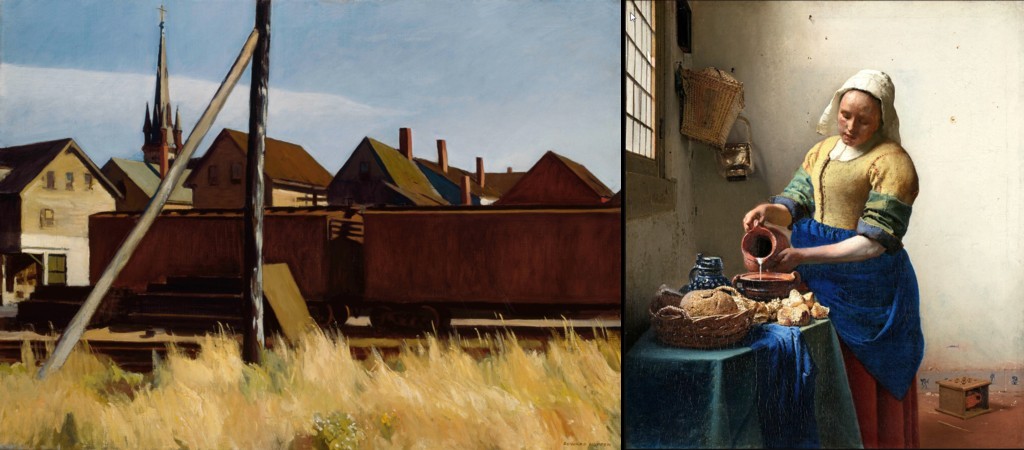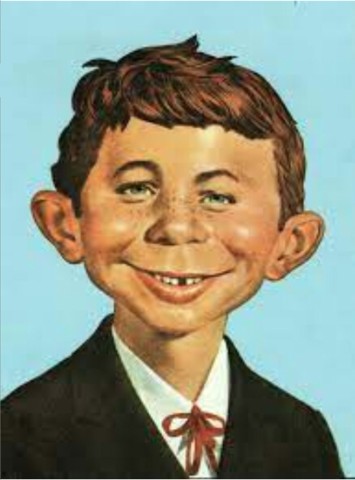
Some of the most renowned artworks of all time featured fairly mundane subjects. Hopper and Vermeer didn’t need to resort to caricature to make their point.
Caricature: A painting or drawing of a person or thing in which the features and form have been distorted or exaggerated.
People engage in model railroading for a variety of reasons. Satisfaction of assembly and seeing trains in motion are two biggies. The largest though, whether the modeler realizes it a conscious level or not, is the desire to re-create in miniature a scene they’ve come across at some point in the past and found to be meaningful to them. Visual images experienced in person tend to be the strongest although it could also be from a photo or video. In short, they saw something that evoked positive feelings and they want to be transported to that place when they enter the train room.
How we interpret and modify that real world subject to fit our always too small space plays a major role in how much we enjoy our layout. The closer our models are to that mental image, the better. The key phrase is “our own mental image”. It’s a personal goal primarily because, truth be told, nobody else really cares that much. Seriously they don’t. Removing the need for outside validation helps us focus to an extent but we still have to satisfy the toughest critic, ourselves.
All of which brings me to the point of today’s blog, caricature. Embedded in model railroad culture is the tendency to exaggerate and amp up the features of the prototype subject we are modeling. In other words, to create a “caricature” of it. How far modelers take it falls on a spectrum but, in general, they tend to take it pretty far. Although the mental imagery of their specific prototype may evoke very powerful positive feelings, when they get to modeling it somehow it isn’t enough. To jack things up, elements are squeezed in, colors are saturated, industry after industry is shoehorned into the design. Perhaps a building fire with emergency equipment is thrown in. Maybe a police officer chasing a burglar is added. You get the idea.
Imagine going into the best steakhouse in town and ordering a prime rib. When the waiter places it in on the table you add hot sauce and salt and order a side order of pizza and tacos because those taste good too. It’s the same thing.
Why would somebody have a subject that matters to them and then alter it to the point of caricature? The biggest reason is fear. Modelers have a great deal of anxiety that when their efforts are complete, they won’t be enough, that they’ll be bored. As a result they keep “adding salt to the prime rib”. Another reason is sensory flatness. They’ve reached a point where it takes a ton of visual stimulation to satisfy them. Finally, they don’t have a strong enough bridge back to the original subject. Their recollection isn’t clear enough. They don’t remember why they chose it in the first place. Site visits to your area of interest and truly studying what makes it what it is can rebuild that link between memory of the 1:1 subject and your layout.
Ultimately, the only judge that matters is yourself. Just make sure that your interpretation of the subject was arrived at consciously as opposed to subconsciously sliding into caricature by default. There are plenty of examples to follow where the modeler didn’t resort to caricature to create something stunning. Allen McClelland’s V&O, Mike Confalone, and Marty McGuirk are a few that come to mind.
(A final note: As an experiment I’ve added a comments section to recent blogs. I’m a little concerned that I may not be able to keep up with the correspondence but let’s see how it goes. Feel free to comment. Depending on my work load I may or not be able to respond to all of them.)
